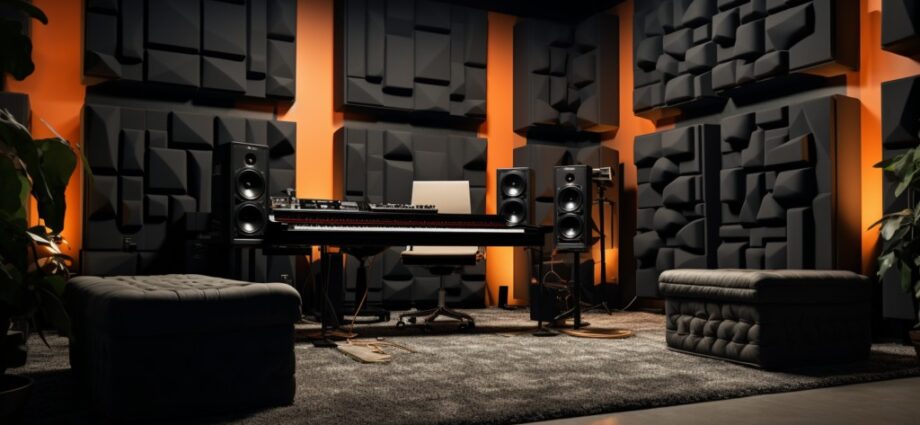In the era of remote work and digital creation, transforming a chunk of your home into a studio or office is no longer just a fancy – it’s a necessity. But whether you’re laying down soulful tracks or dialling into back-to-back Zoom meetings, ambient noise can turn any session into a struggle. Enter soundproof foam, a game-changer for anyone looking to produce professional-quality work from the comfort of their home.
The Quest for Quiet
Step one is to understand the importance of soundproofing in home studios and office spaces. External noises are distracting and can severely affect the quality of recorded audio and concentration.
Soundproof foam helps create an acoustically controlled environment where your creativity or productivity doesn’t get drowned out by the sound of traffic, construction, or even loud neighbours.
Why Foam Over Others?
A soundproof foam has several edges over other materials like carpets, curtains, or bulkier, more expensive acoustic treatments:
- Cost-Effectiveness: It’s generally more affordable to buy and install.
- Ease of Installation: Lightweight and easy to cut into shapes, it can be adapted to any room or surface without professional help.
- Versatility: Suitable for a variety of applications, from vocal booths to podcasting stations.
- Effective Sound Absorption: Foam’s structure helps trap sound waves and minimise echo and reverberation.
Types of Soundproof Foam
Not all foam is created equal, and understanding the differences helps tailor your soundproofing strategy:
- Acoustic Panels: Ideal for wall and ceiling applications to absorb sound reflections.
- Bass Traps: Placed in corners, they help manage low-frequency sounds that are typically hard to control.
- Diffusers: Though not foam, they complement its function by evenly scattering sound waves, reducing echoes without deadening the room too much.
Installation Insights
Installing soundproof foam is more than sticking panels on walls. Here’s how to make the most of it:
- Identify Problem Areas: Use clapping or white noise to find where sound bounces back the most.
- Coverage Strategy: Focus on critical points like the wall-facing speakers for recording setups, or the area behind your desk in office spaces.
- Mounting: Adhesive strips, spray glue, or even mounting pins can be used, depending on the permanency you’re after.
Maintenance and Longevity
Maintaining your soundproof foam is key to ensuring it continues to perform at its best over time:
- Regular Cleaning: Dust and other particles can affect the foam’s absorption capabilities. Vacuuming gently or wiping with a dry cloth can keep it in top condition.
- Avoid Moisture: Foam absorbs not just sound but also moisture, which can lead to mould. Keep it dry and address any room humidity issues.
- Damage Inspection: Periodically check for signs of wear or damage that might affect performance. Replace any compromised pieces promptly.
Maximising Acoustic Effectiveness
To fully harness the benefits of soundproof foam, consider integrating these practices:
- Layering: Combining different thicknesses and types of foam can target a broader range of frequencies for more comprehensive sound control.
- Strategic Placement: Beyond walls and corners, consider doors and windows, common sources of sound leakage.
- Combining Materials: To fortify your space against noise, use soundproof foam in conjunction with other materials like acoustic seals and dampening sheets for doors and windows.
Wrapping It Up
Soundproof foam offers a versatile, cost-effective way to control your acoustic environment, whether you’re an aspiring musician, a content creator, or someone trying to make your home office as efficient as possible. The key lies in choosing the right type for your needs, installing it strategically, and adjusting based on what you (and your microphone) hear.
Looking to take your first step into better sound management? Consider exploring more on how acoustic treatments can elevate your home studio or office space. Your work deserves the best possible environment to shine.

